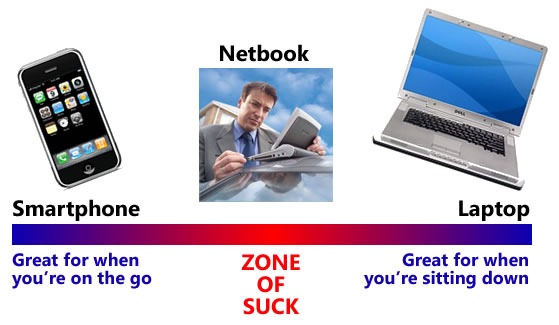
Here’s an idea sent to me by a friend of mine who’s not a computer programmer, but a “suit” working at a Bay Street firm in Toronto (for those of you not from Canada, “Bay Street” is Canadian for “Wall Street”).
Consider two systems, with specs as shown below:
| Component | System A | System B |
| Processor | Intel 1.6 GHz w/ 533 MHz bus | Intel 1.6 GHz w/ 533 MHz bus |
| Memory | 1 GB RAM | 512 KB RAM |
| Hard drive | 160 GB, 5400 RPM | 80 GB, 5400 RPM |
| Display | 1024 * 600 WSVGA | 1024 * 768 WSVGA |
| Graphics card | 3D-capable graphics card, also capable of extending the screen onto an external monitor | 3D-capable graphics card, also capable of extending the screen onto an external monitor |
| Networking | 802.11b/g wifi | 802.11b/g wifi |
| Operating system | Windows XP (and probably runs Windows 7 just fine) | Windows XP (and probably runs Windows 7 just fine) |
Although the systems are quite similar, they are from two different generations of portable computer:
- One is an IBM/Lenovo Thinkpad T42 laptop from 2005 (pictured below and to the left), and
- The other is a Lenovo S10 netbook from 2009 (pictured below and to the right).
Which one is System A and which one is System B?


It turns out that System A is the current-model netbook and System B is the 5-year old laptop.
My friend writes:
Netbooks are nothing other than stripped down laptops stuffed into smaller boxes. You wouldn’t buy a 5 year old notebook with the expectation that it would perform like a new one, would you?
The analogy I used when I bough a netbook is that it is like the second vehicle. I use it to run around town and do the small errands. It’s small, convenient and easy on gas but for the heavy lifting or processing, I use my laptop SUV/Minivan.
Previous entries in the Netbooks Suck series of articles: